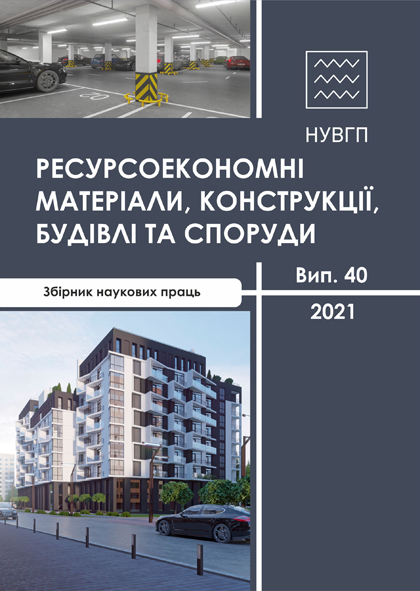ON THE CHOICE OF A CALCULATION SCHEME FOR A STATICALLY UNDETERMINED METAL FRAME
DOI:
https://doi.org/10.31713/budres.v0i40.015Abstract
For a single-span steel frame with rigid crossbar bolt the forces in the sections of the column at constant, snow, wind and crane loads have been determined. The calculations were performed using a software package ЛІРА-САПР 2016 (non-commercial version) for various calculation schemes. Schemes with replacement of a truss on a continuous crossbar have been used. Thus in scheme 1: we adhered only to the approximate ratios of bending stiffness; in scheme 2: for crossbars and columns there were set bending and axial stiffness calculated by known formulas that are based on loads, mechanical and geometric parameters; in scheme 3: for the crossbar we have set bending and axial stiffness determined on the basis of cross-sectional areas of the truss belts; and for the column the calculations were made by known formulas depending on the loads, mechanical and geometric parameters. The calculation scheme with a crossbar as a truss has also been used.
The simulation results have indicated a slight change in effort when changing the axial stiffness. Thus, when reducing the axial stiffness by two orders of magnitude, the change in effort from constant, snow, wind and horizontal crane load has not exceeded 1.7%.
The difference between the efforts that were obtained as a result of calculations in the approximate setting of the ratios of bending stiffness and setting of the stiffness (bending and axial) calculated according to the formulas based on loads, mechanical and geometric parameters does not exceed 7.5%. There is a large difference in moments in individual sections, but the values of bending moments in these sections are insignificant.
The difference between the forces obtained when replacing the truss with a beam and calculating its stiffness by bending moments and cross-sectional areas of the belts has been insignificant (in most sections does not exceed 10%). In some sections this difference is larger, but it should be noted that the amount of effort in these sections is insignificant. The difference in bending moments of about 10% for all sections occurs under both constant and snow loads. It should also be noted a more significant difference between the results of calculations regarding the calculation schemes with the farm and the corresponding beam. And as to wind loading it happened practically in all sections.

